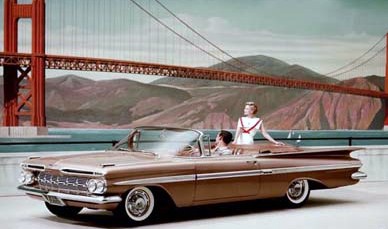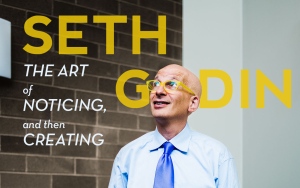As the Quakers say, “My friend speaks my mind.” In this case, my friend is Gerry McGovern. And he’s never wrong.
Here’s the full text of is latest New Thinking E-Newsletter. It’s absolutely worth a read and a ponder.
Image: Andreas Praefcke/Wikimedia Commons
BRANDING IS BULL
The origin of the word branding comes from the branding of cattle. Let’s travel back in time 100 years and listen in to a branding conversation by two cattlemen.
“Very impressive brand, Tom. It has a wonderful aesthetic feel to it.”
“Do you think so, John? We did think very deeply about the colors to choose. And we did have an intense debate about whether to use Athelas or Freight Text Pro. We decided to go with Athelas. It has that certain je ne sais quoi.”“Absolutely! Superb choice. It will bring the customer on an emotional journey. Listen, the reason for my visit, Tom, is that I’d like your advice. We’re thinking of doing a rebranding.”
“Why is that, John?”
“Well, you know, the last couple of years have not been so good for the brand. We’ve had a drought, got hit by some diseases. The meat quality on the cattle is not great. So, I thought that if we refreshed the brand we could capture back some of our old market share.”
“What a fantastic idea, John! I know just the branding agency for you. They understand bull better than anyone I know.
“It’s amazing, Tom, isn’t it. Take the same old scrawny tough-as-nails meat, put some nice packaging and branding on it, and it just flies out of the store.”
“Those branding guys are magicians, John. They truly understand human emotion and are so brilliant at manipulating it. With the right brand you can sell any sort of bull.”“And to think, Tom, when I was a kid we had such a limited understanding of what branding was. We thought it was just a unique mark we made on the cattle so that we would know who owned what. When I was a young, foolish teenager, I was under the mistaken impression that what mattered was the meat itself.”
At this stage John laughed. Tom laughed too. They both found the idea that the meat was more important than the brand absolutely hilarious.
“Some idiots say, Tom,” John said in between gushes of laughter, “that the meat is the brand!” Tom looked at him for a moment and then literally rolled around the floor laughing.
Where do people get these crazy ideas from? Don’t they know that coming up with meaningless, interchangeable taglines like: “Live life at a faster pace” is much more important than the quality of the product or service? Haven’t they learned from the magicians of marketing and branding that it’s all about coming up with a compelling story? That the right font and the right color are the quickest way to a customer’s credit card?
Branding is bull, and that’s a fact. Branding in practice is the manipulation of human emotion, the targeting of human weaknesses, the wrapping of the product in an image that has got nothing to do with the product itself. The gushing, smiling faces of actors pretending to be customers. Branding is the mark of the establishment. The opposite of authenticity.
Yes, we humans are fools and we have long fallen for branding and the whole school of psychological manipulation that goes behind it. But there is a reaction underway. Many of us are getting tired of being fools and being fooled. We go to the Web now, to search, to research, to check the facts, to read up on what people like us who have bought the product have experienced.
Gerry McGovern
I encourage you to follow McGovern. On Twitter, he’s @gerrymcgovern.
Subscribe to his newsletter at: http://www.gerrymcgovern.com/new-thinking



